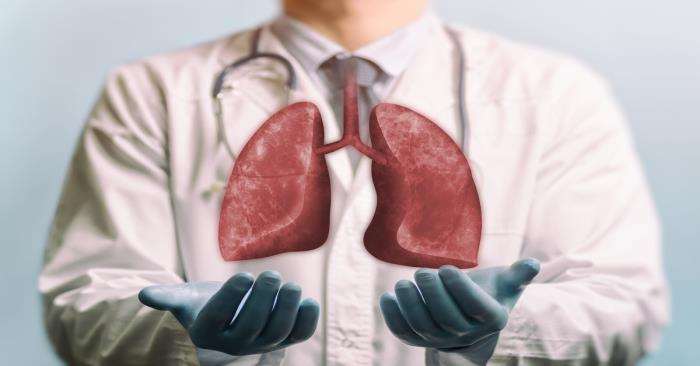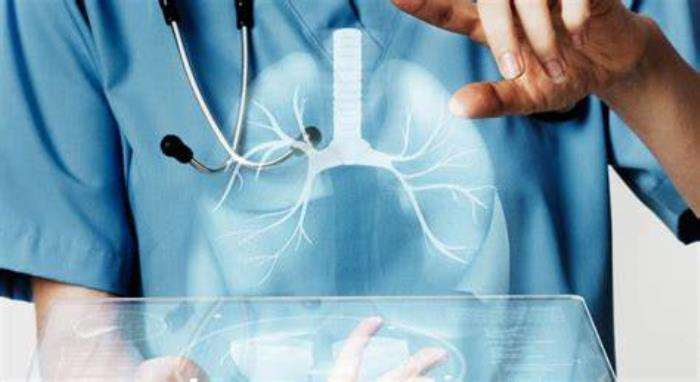Rehabilitation is vital after lung transplant surgery to ensure a successful recovery and optimize the function of the transplanted lung. It helps patients regain physical strength, improve respiratory efficiency, and adapt to their new lung capacity. A structured rehabilitation program also minimizes complications such as infections, muscle deconditioning, or poor circulation, ultimately improving the patient’s quality of life.
How Physical Therapy Enhances Recovery Post-Transplant
Physical therapy plays a crucial role in enhancing recovery by promoting mobility, improving cardiovascular health, and strengthening the respiratory muscles. Tailored exercise programs help patients regain independence, reduce fatigue, and prevent complications like blood clots or lung infections. Regular physical therapy sessions also improve overall endurance and support long-term transplant success.
Goals of Physical Therapy in Lung Transplant Patients
The primary goals of physical therapy in lung transplant patients include restoring functional mobility, improving respiratory muscle strength, and enhancing lung capacity. Physical therapy also focuses on reducing post-surgical pain, preventing joint stiffness, and building endurance for daily activities. These goals collectively ensure a smoother recovery process and better long-term outcomes.

Prehabilitation: Preparing for Surgery Through Physical Therapy
Prehabilitation, or pre-surgery physical therapy, prepares patients for lung transplant surgery by improving their physical fitness and strengthening their respiratory system. This proactive approach helps optimize lung capacity, reduce surgery-related complications, and enhance post-operative recovery. Prehabilitation programs often include aerobic exercises, strength training, and breathing exercises tailored to the patient’s condition.
Exercises to Improve Lung Capacity and Endurance
Exercises like diaphragmatic breathing, walking, and cycling are designed to improve lung capacity and cardiovascular endurance in lung transplant patients. These activities help increase oxygen exchange efficiency, strengthen respiratory muscles, and build stamina. Regularly practicing such exercises under supervision is essential for enhancing the transplanted lung's performance and supporting long-term health.
Managing Pain and Stiffness with Physical Therapy
Post-surgical pain and stiffness can hinder recovery after a lung transplant, but physical therapy helps alleviate these issues through targeted interventions. Techniques such as gentle stretching, massage, and gradual range-of-motion exercises reduce stiffness, promote circulation, and improve flexibility. Physical therapists also teach pain management strategies to make recovery more comfortable.
The Role of Breathing Exercises in Post-Transplant Recovery
Breathing exercises are a cornerstone of rehabilitation after lung transplant surgery, as they help patients regain control over their breathing patterns and enhance lung function. Techniques like pursed-lip breathing and incentive spirometry improve oxygen intake, reduce shortness of breath, and strengthen the diaphragm. These exercises also promote relaxation and prevent post-operative complications such as pneumonia.
Cardiovascular Fitness Training for Lung Transplant Recipients
Cardiovascular fitness training is essential for lung transplant recipients to improve lung function, heart health, and overall stamina. Activities like walking, cycling, or using a treadmill under supervision help strengthen the cardiovascular system and enhance oxygen delivery to the body. These exercises also aid in reducing fatigue, boosting energy levels, and promoting long-term recovery post-surgery.
Strength Training to Build Muscle Post-Surgery
Strength training is critical for rebuilding muscle mass lost during illness or surgery. Incorporating exercises using resistance bands, light weights, or body weight helps improve muscular endurance and overall physical strength. This, in turn, supports better mobility and reduces the risk of injury, contributing to a higher quality of life post-transplant.
How Physical Therapy Reduces Risk of Post-Transplant Complications
Physical therapy plays a pivotal role in preventing complications such as infections, blood clots, and muscle atrophy after lung transplant surgery. Guided exercises improve circulation, enhance lung function, and promote faster wound healing. Regular sessions with a trained physical therapist ensure that activities are safe and aligned with the patient's recovery needs.
Balance and Mobility Exercises for Improved Quality of Life
Balance and mobility exercises are vital for lung transplant recipients to regain stability and coordination, particularly after long periods of physical inactivity. Activities such as yoga, tai chi, and targeted balance drills help enhance core strength, reduce the risk of falls, and improve confidence in performing daily tasks.
The Role of Occupational Therapy in Daily Function Post-Transplant
Occupational therapy focuses on helping lung transplant recipients adapt to their daily routines and regain independence. Therapists provide strategies for managing energy levels, using assistive devices, and safely performing activities like cooking, dressing, and personal care. This tailored support ensures a smoother transition to normal life post-surgery.
Individualized Rehabilitation Plans for Lung Transplant Patients
Rehabilitation plans for lung transplant patients are highly individualized, taking into account the patient's age, fitness level, and medical history. These plans combine cardiovascular training, strength exercises, and flexibility routines tailored to the recipient's specific recovery goals. Individualized plans ensure that patients progress at their own pace while minimizing risks.

Monitoring Progress Through Physical Therapy Milestones
Physical therapists track rehabilitation progress through defined milestones, such as improved walking distance, increased lung capacity, or better strength metrics. Regular assessments help identify areas that need more focus and allow for adjustments to the therapy plan, ensuring the patient stays on track toward full recovery.
Addressing Psychological Benefits of Physical Activity Post-Transplant
Physical activity not only aids physical recovery but also improves mental well-being in lung transplant recipients. Exercise reduces stress, alleviates anxiety, and releases endorphins, enhancing mood and self-esteem. Participating in structured therapy programs also fosters a sense of accomplishment and control over one’s recovery journey.
Home-Based Physical Therapy Programs for Transplant Recovery
Home-based physical therapy programs offer a convenient alternative for patients who cannot attend in-person sessions regularly. These programs include guided exercises, virtual consultations, and self-monitoring tools to ensure adherence. Such flexibility allows patients to maintain consistent progress in their rehabilitation.
Overcoming Challenges in Lung Transplant Rehabilitation
Rehabilitation after a lung transplant can present challenges such as fatigue, discomfort, or emotional setbacks. Overcoming these obstacles requires a multidisciplinary approach involving medical professionals, therapists, and support groups. Clear communication, realistic goals, and continuous motivation are key to addressing these challenges effectively.
Technology in Physical Therapy: Virtual Sessions and Wearables
Advancements in technology have transformed physical therapy for lung transplant patients. Virtual sessions allow patients to connect with therapists remotely, while wearable devices track progress metrics like heart rate, step count, and lung function. These innovations enhance therapy accessibility and engagement, ensuring consistent improvement.
How Nutrition Supports Physical Therapy Goals in Rehabilitation
Proper nutrition complements physical therapy by providing the energy and nutrients needed for muscle repair and overall recovery. A balanced diet rich in proteins, vitamins, and minerals supports the body during exercise, enhances strength gains, and promotes faster healing. Dietitians work closely with therapists to align nutritional plans with therapy goals.
The Role of Pre-Transplant Tend Evaluation in Lung Transplant Success
Explore the role of pre-transplant tend evaluation in lung transplant success. This article highlights the critical evaluations and tests performed before lung transplant surgery, ensuring patients are adequately prepared and increasing the likelihood of a successful transplant.
How to Manage Post-Transplant Infections and Other Health Concerns
Discover how to manage post-transplant infections and other health concerns. This article provides guidance on preventing and managing infections, addressing potential complications, and maintaining overall health after lung transplant surgery to ensure long-term recovery.
Long-Term Benefits of Physical Therapy for Lung Transplant Survivors
Physical therapy offers long-term benefits such as improved lung function, enhanced strength, and reduced risk of chronic conditions for lung transplant survivors. It also fosters independence, improves quality of life, and supports mental health, ensuring a smoother transition to normalcy after the transplant.
Best Lung Transplant in India
The Best Lung Transplant in India offers a vital treatment option for patients with end-stage lung diseases, combining advanced surgical expertise with comprehensive post-transplant care.
Best Lung Transplant Hospitals in India
The Best Lung Transplant Hospitals in India are equipped with cutting-edge technology and experienced transplant teams, ensuring seamless care and improved outcomes for patients.
Lung Transplant Cost in India
The Lung Transplant Cost in India is structured to provide affordability while maintaining high standards of medical care and long-term support for patients.
Best Lung Transplant Surgeons in India
The Best Lung Transplant Surgeons in India are highly skilled in handling complex transplant cases, offering precise surgical interventions and personalized patient care for successful recoveries.
FAQ Section
1. Why is physical therapy important after a lung transplant?
Physical therapy is crucial to improve lung function, rebuild strength, and enhance overall mobility. It also helps prevent complications like muscle atrophy, blood clots, and infections during recovery.
2. What types of exercises are included in lung transplant rehabilitation?
Lung transplant rehabilitation typically includes cardiovascular exercises, strength training, flexibility routines, and balance exercises tailored to the patient’s needs and recovery goals.
3. How soon after surgery can I start physical therapy?
Physical therapy often begins within a few days of surgery, starting with light, supervised exercises to gradually improve mobility and strength as the patient recovers.
4. Can physical therapy help improve lung capacity?
Yes, physical therapy improves lung capacity by incorporating breathing exercises and cardiovascular activities that strengthen the respiratory system and enhance oxygen exchange.
5. How does physical therapy prevent complications post-transplant?
Physical therapy promotes better circulation, reduces the risk of blood clots and infections, and strengthens the muscles to support overall recovery, preventing potential post-transplant complications.